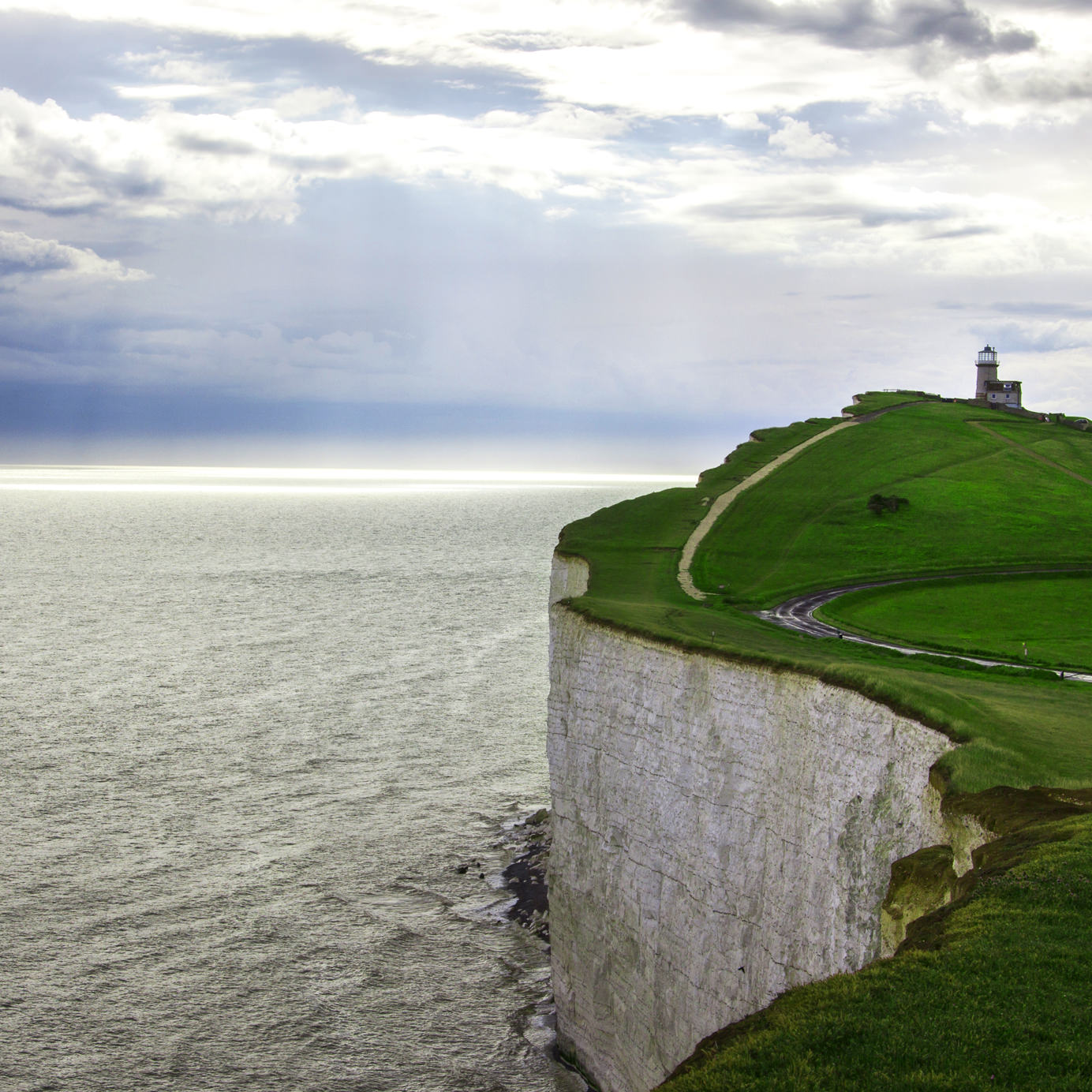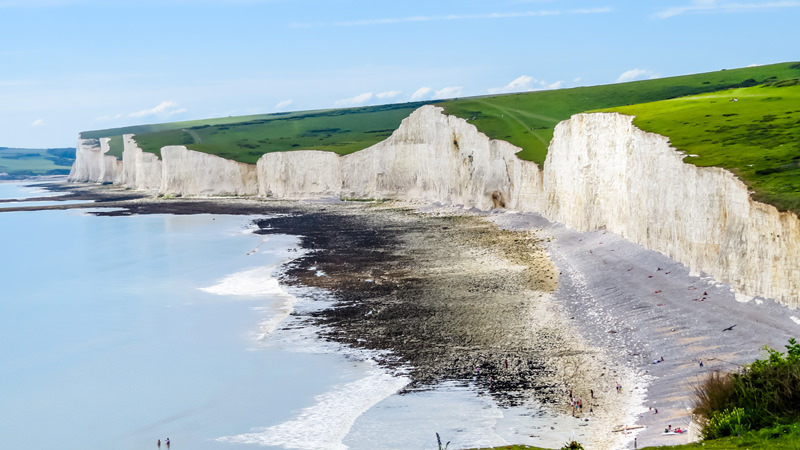English Sparkling Wine is having a moment. What was once Champagne’s invitation-only pool party, attended exclusively by the world’s most finely honed palates, is now being invaded by cannonballing English sparkling wine producers.
This is thanks to a number of fortuitous elements coming together to create a right-time, right-place kind of scenario. First of all, you’ve got climate change creating a warmer climate. Researchers report that the U.K. has been warming faster than the rest of the world since 1960, with eight of the warmest years in the past century happening since 2002.
“We are now just half a degree cooler than the Champagne district,” says Richard Balfour-Lynn. Balfour-Lynn is the owner of the 400-acre Hush Heath Estate in Kent, a shire-like swath of land brimming with apple orchards, ancient oak woodlands, and, of course, manicured vineyards producing award-winning sparklers. It’s not just the climate behind English sparkling wine giving Champagne a run for its money. “The composition of our soil and changes and improvements in winemaking techniques have contributed to the phenomena,” says Balfour-Lynn. England’s got a chalky soil that’s virtually identical to the Champagne region just 80 miles away, across the Channel.
But it goes beyond that, he says. Take a look at global trends in drinking. People want wine with lower alcohol levels. “The once-hugely popular heavily oaked Chardonnays and Australian Shiraz are being passed over now in favor of more delicate flavors, ones that develop in cooler climates,” says Balfour-Lynn.
Consumers also want authenticity, and what he calls “provenance” – they are looking to connect their drinking experience to the winemaker or region as much as they are to the grape.
“Twenty years ago at a bar, you ordered Champagne,” he explains. “If I’d ordered a glass of sparkling wine for my girlfriend, she would have thrown me out.” Today, things have changed. “Now, we order glasses of wine from specific makers of Champagne, or sparkling wine,” he says, “and the choices people make are often made in part because of a connection they feel to the winemaker.”
Connecting consumers to not just the idea of the land, but the taste of it, via the bottle, is an essential component of winemakers’ missions in England. “I’m not here to express myself, I’m here to express the beautiful terroir,” explains Corinne Seely, head winemaker at Exton Park, one of the newest, most lauded, and, at 55 acres, largest vineyards in the county.
Seely is one of a handful of French-born-and-trained winemakers who has fled to England.
“This kind of opportunity doesn’t come often,” she says. “Five years ago, it would have been impossible to imagine French winemakers going to England to be a part of a new wave, a new movement, and yet here we are.”
For Seely, English sparkling wine is about one thing. “The terroir here allows us to tease out a ripe taste without added sugar, a freshness and a delicacy that is entirely new,” she tells me.
*
English wine may just be passing the red velvet ropes into the poshest cellars now, but wine has been made in the region for centuries. Winemaking was introduced to England by the Romans. More than 40 vineyards are mentioned in the Domesday Book, a survey of England and Wales completed at William the Conqueror’s behest in 1086. In 1509, when Henry VIII was crowned, there were 139 vineyards recorded in England.
Unfortunately for ancient, medieval, and Renaissance locavores, the grapes under vine were primarily esoteric varieties of Teutonic descent, like Rondo. It wasn’t until the 1970s that slowly rising temperatures, improved winemaking techniques, and a growing contingent of grape geeks converged like a merry, three-headed hydra on the chalky, south-slope-facing lands of Kent, Sussex, Hampshire, Suffolk, Berkshire. and Cambridgeshire to plant high-quality, noble grape varietals.
The party really got started in the 1990s, when pioneers began to plant the grapes French fizzophiles adore. So says Simon Woods, renowned wine writer and coordinator of the International Wine Challenge. Woods, like Balfour-Lynn, believes that climate change and production methods laid the groundwork for the astounding commercial success of English sparkling wine. But he adds that without planting noble varietals, it would never have happened.
“It’s taken the efforts of pioneers from the early 1990s onwards to steer the industry away from so-so table wines made from Germanic grapes towards sparklers based on Chardonnay and Pinot Noir,” he tells me.
According to the latest figures from English Wine Producers, there are 503 commercial vineyards and 133 wineries currently producing 5 million bottles of wine in England. This is up from 3 million bottles in 2011. That’s a 66 percent increase in five years. More than 4,940 acres of grapes are being grown, a number that has doubled in the past 10 years and is projected to grow another 50 percent by 2020. Of the wine produced, an astounding 66 percent is sparkling (24 percent is still white and 10 percent is red or rose). Within the sparkling category, Chardonnay, Pinot Noir and Pinot Meunier account for more than 50 percent of the varietals used (the ones used in Champagne to make Champagne).
So production is ramping up, most of the wine is sparkling, and most of the sparkling is created from the same varietals used to make Champagne. Quality — check.
And every producer appears to exude the kind of delightful, charming, English-cottage chic that appeals to the millennial generation’s eternal quest for authenticity. Connection — check.
But it’s not all straightforward supply and demand. Growers are being supported through grants, explains Julia Tristam Eve, the marketing director for English Wine Producers, an association of vineyards that aims to promote English wine through legislative, promotional, and technical means. “There has also been some support made available to help with the costs of export ventures,” Eve says. “Wine is one of the U.K.’s fastest-growing agricultural sectors.”
All this is good news for the American consumer. While only 5 percent of English wine is exported, it will likely grow to 25 percent in the next few years, Eve says. Currently, award-winning sparklers from Dibgy Fine English, Hattingley Valley, Hush Heath Estate, Bolney Wine Estate, Gusbourne, Exton Park, and Camel Valley are among the producers exporting to the U.S.
*
What about old standby, dear Champagne? The warming that has created such a hospitable environment for English vines has done just the opposite for French vines, with producers forecasting paltry harvests in coming years. Already, producers are picking grapes two weeks earlier than they were 20 years ago in an attempt to retain the freshness and acidity that warm weather denudes grapes of.
Legendary French houses, which have nervously been giving English sparklers the side eye for close to a decade, have started moving in. Taittinger and Vraken-Pommery have invested millions of dollars planting vineyards and setting up production in England.
The land is cheaper, the soil is about the same, and the climate is ideal. In fact, many claim the terroir in England today is analogous to Champagne’s in the 1970s, the period the region reached its peak in terms of quality.
“The South Downs of England follow on from the Paris Basin, which is renowned for its thin chalky soils,” says Mardi Roberts, a marketing director at Ridgeview in South Downs. (The Queen stocks Ridgeview in her cellar, and has memorably uncorked it during formal state dinners with China and the United States.) “We have similar soil structure close to the South Downs with clay, chalk, and plaudina limestone,” Roberts explains. “Our climate follows very similar to that of Champagne with slightly cooler temperatures and a longer growing season.” That longer growing season means that British producers can leave the grapes on the vines longer, bringing the grapes to full ripeness while also maintaining natural acidity thanks to the cooler evenings.
But despite the similarities to Champagne’s soil and climate, the final product isn’t the same. “We are not trying to make French wine here,” says Balfour-Lynn about British sparkling wine. “Ours has an excellent clarity of color, it’s clean on the nose, and it has a well-balanced acidity.” And while Balfour-Lynn admits that many French Champagnes do as well, he prefers the British iteration. “I’d say ours are racier and more vibrant because we do have a slightly cooler climate.”
Kirsty Goring, who helps run the family-owned Wiston Estate Winery, agrees. She explains that her approach is a highly localized, English version of the French method of winemaking.
“The chalk terroir of the South Downs has proven to be a fantastic location for the classic Champagne varietals,” she says.
Winston’s sheltered, south-facing slope provides just enough topsoil for the vines to establish and be fed while at the same time the roots penetrate the chalk, which means the grape juice takes on complex flavors and has an extraordinary finesse, says Goring. “The chalk both provides water but also means the vines will have to work, putting their energy into the grapes rather than an over-vigorous plant,” she explains. Plus the proximity to the sea means the climate in the vineyard is temperate, which gives it good protection from frost.
Time will tell if England’s ascent is a harbinger of France’s (continued) descent. In terms of production, England simply can’t compete with France. Currently, 2,000-plus acres specifically for sparkling wine are under vine in England, with thousands more planned. But enough to compete with France’s 76,000 acres devoted to Champagne grapes? Nope.
“If England surpasses France, it will be in terms of its reputation as a premium product,” Seely says.
But she believes that what’s happening in England is actually bigger than that. England is creating a whole new style, never tasted before. “We are not making Prosecco, Cremant, or Cava, because we are a cool climate,” she says. “But we aren’t making Champagne, either, even though there are striking similarities between the geology and weather that helps produce their terroir. The taste of English sparkling wine? It’s unlike anything else.”
A British invasion is headed to a bar near you. This time, with bubbles.

